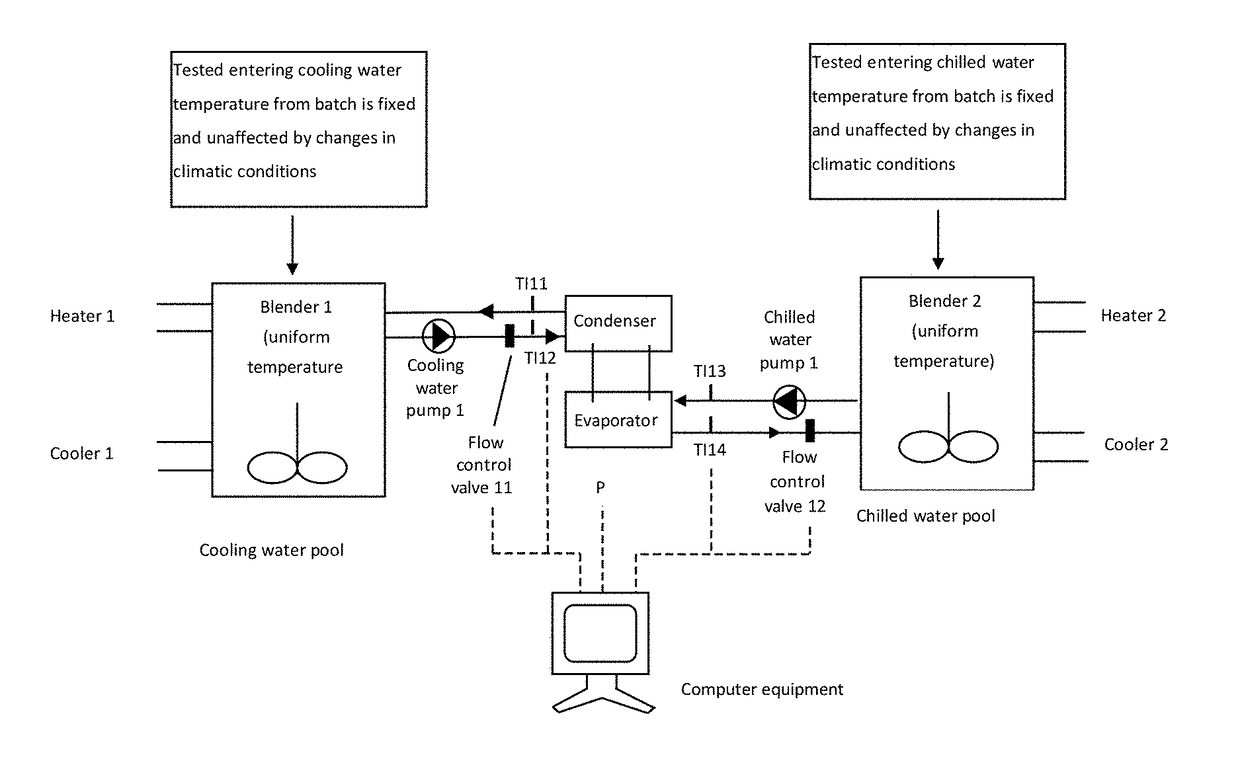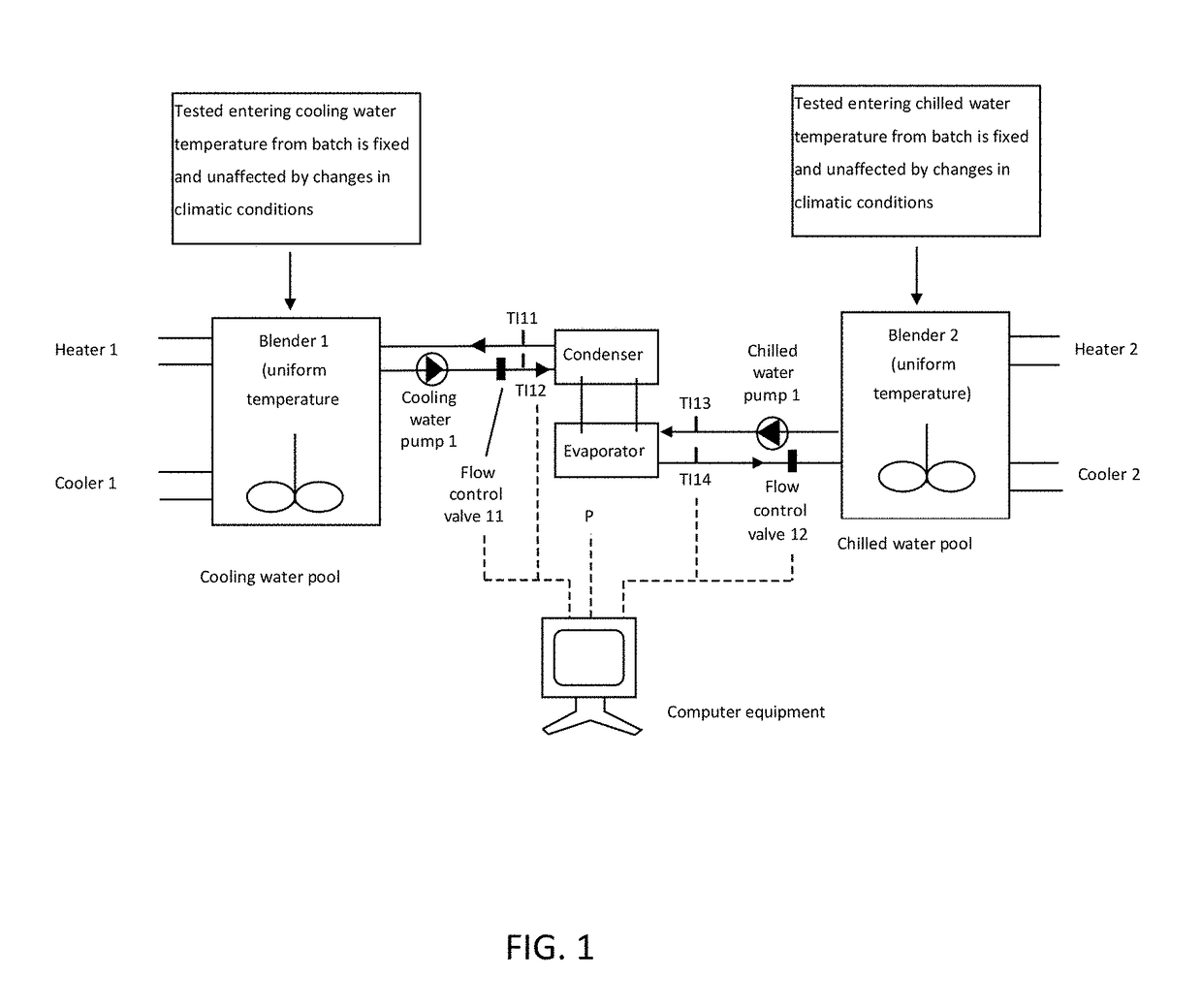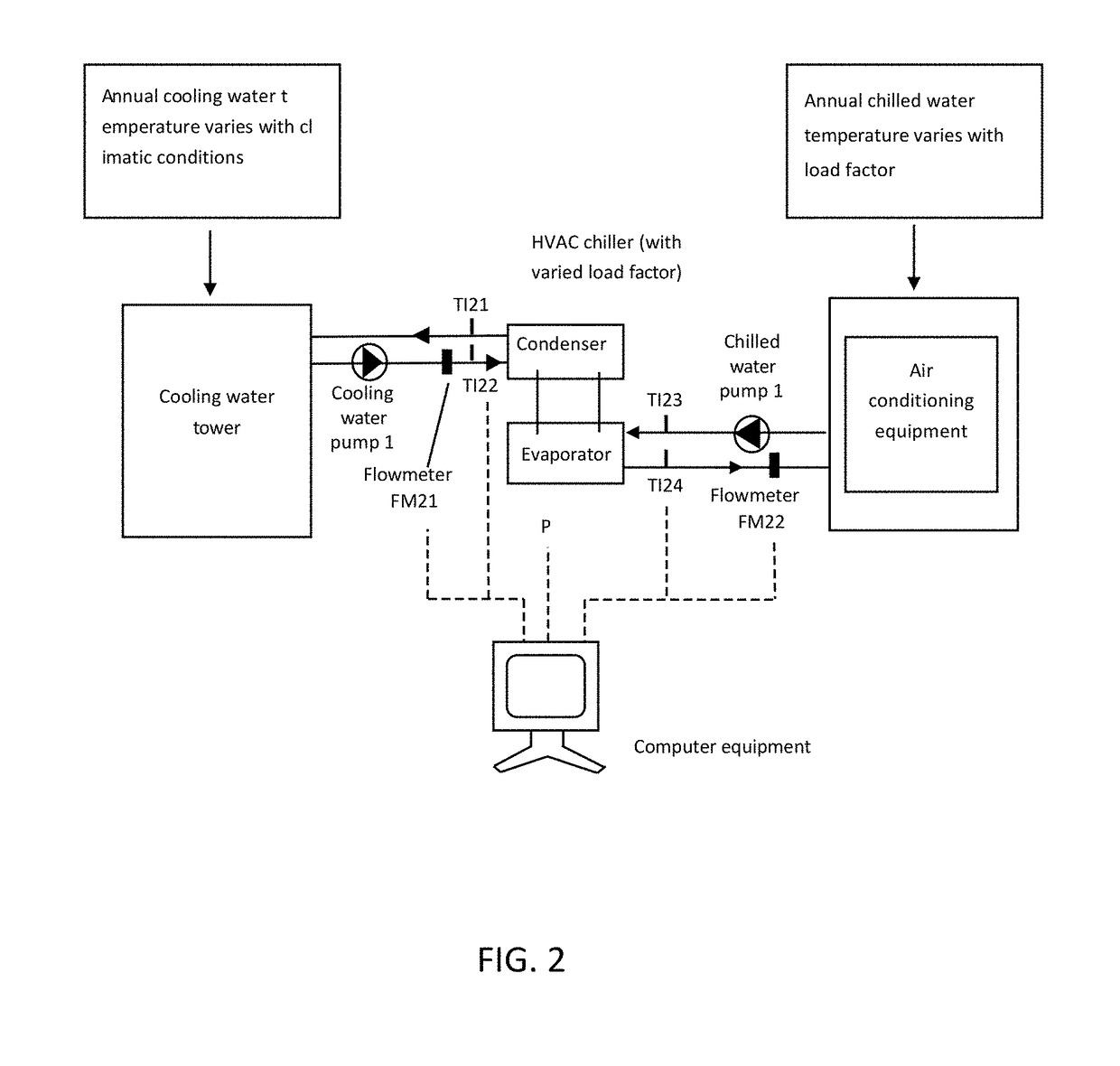Method of verifying and analyzing energy efficiency ratio EER of a heating ventilation and air conditioning HVAC chiller unit
a technology of hvac chiller unit and energy efficiency ratio, which is applied in the field of verification and analysis, can solve the problems of not providing steady-state numbers at fouling state, unable to determine whether actual energy consumption meets specified criteria, and it is difficult for sellers to provide product acceptance and warranty of newly installed equipment, so as to ensure the correctness of obtained eer values, avoid wasting electrical power, and solve the effect of effective solution
- Summary
- Abstract
- Description
- Claims
- Application Information
AI Technical Summary
Benefits of technology
Problems solved by technology
Method used
Image
Examples
Embodiment Construction
[0040]The following descriptions are exemplary embodiments only, and are not intended to limit the scope, applicability or configuration of the invention in any way. Rather, the following description provides a convenient illustration for implementing exemplary embodiments of the invention, as follows.
[0041]A method of verifying and analyzing energy efficiency ratio (EER) of an HVAC chiller unit in accordance with the present invention applies to an HVAC chiller unit of an air conditioning unit. The method is using computer equipments to build daily steady-state and non-steady state data out of the field dynamic EER that is subject to the dynamic changes during four seasons a year, i.e. spring, summer, autumn and winter, or a day, i.e. morning, noon and night, or in season or out of season mapped to business needs under both kinds of steady and non-steady state conditions, so as to provide a comparative analysis of running EER values to show a correct changing trend of the EER value...
PUM
 Login to View More
Login to View More Abstract
Description
Claims
Application Information
 Login to View More
Login to View More - R&D
- Intellectual Property
- Life Sciences
- Materials
- Tech Scout
- Unparalleled Data Quality
- Higher Quality Content
- 60% Fewer Hallucinations
Browse by: Latest US Patents, China's latest patents, Technical Efficacy Thesaurus, Application Domain, Technology Topic, Popular Technical Reports.
© 2025 PatSnap. All rights reserved.Legal|Privacy policy|Modern Slavery Act Transparency Statement|Sitemap|About US| Contact US: help@patsnap.com



